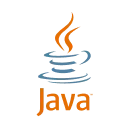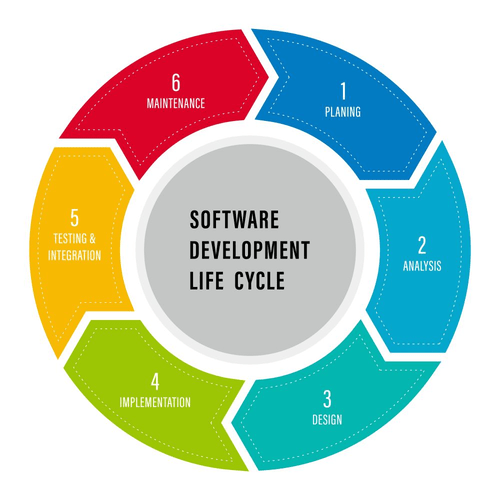You will navigate through a series of Sprints, constantly enhancing your skills and performance. Option D (“Minimum of 7”) is not accurate as there is no minimum requirement for the Scrum Team size. The emphasis is on the ideal range of 7 plus or minus 2, rather than a specific minimum or maximum number. If there are two or more subteams within the team, splitting can be an option.

This is similar to the daily Scrum meetings that are held in each Scrum team. Sprint planning is a Scrum process that helps teams map out the work to be done in a specific sprint. In Scrum, this primarily includes customers but also includes senior project managers, support team members, or scrum dev team anyone whose inputs help the project move in the right direction. You can easily partner with these experienced software developers according to your project needs by sending us your initial project specifications. One of our account managers will reach out to you for further assistance.
Product backlog
Looking forward to hearing you exploit Scrum and DevOps to deliver great products to your customers. If your team want to learn how to use Scrum and DevOps check out Professional Scrum Developer course. Many managers or organisations still see Scrum’s Sprint as a mini-waterfall (or sometimes mini-deadlines) and only about delivering features. People working in these organisations come to think that Scrum does not provide time for improvements. In fact, Scrum Guide states that at least one item in the Sprint Backlog must contain improvements identified during the previous retrospectives. Scrum Team adopting DevOps will go further by deliberately providing slack time to innovate as much as 20% time (or more) to improve the value of delivery in the value stream.
- In every sprint, the development team should allocate up to 10% of its overall capacity to assist the product owner with all these activities.
- Think about a daily with 15 persons, that 1 minute per team member.
- Think of a development team as similar to a production support team that is called in during the night because something has gone wrong.
- An action plan to incorporate the lessons learned will then be drawn up which will then be distributed to each member of the team.
- You can even add Scrum points to these lists to know how long it’ll take to finish your product backlog.
Yes, this might mean they lay bricks, do plumbing, even dig holes, but the person is known as a developer. So, that means the ‘developer’ role in scrum means a team member who has the right skills, as part of the team to do the work. In this article, we’ll define scrum roles and how you can fold them into your organization, without printing new business cards. Great product owners are empowered, knowledgeable, empathetic, available, and decisive. Git’s flexibility supports a range of workflow needs for any given software team. Scrum and other Agile methodologies are designed for a specific community.
Atlassian Together
Agile has had a huge impact on me both professionally and personally as I’ve learned the best experiences are agile, both in code and in life. You’ll often find me at the intersection of technology, photography, and motorcycling. Option A (“10 or fewer”) is a reasonable approximation of the recommended team size range. The rationale behind this recommendation is to maintain effective communication, collaboration, and self-organization within the Scrum Team. With a smaller team, it can be easier to coordinate and make decisions efficiently.

Product owners make sure that the product being developed delivers maximum value for the business and users. This role also prioritizes work and manages the product backlog to move production along. As a project management framework, Scrum is enormously popular due to its lightweight nature.
Scrum Role Name:
Someone going off on a tangent is going to have a deeper impact on a large team than a small one. The idea is to estimate which tasks were completed over the previous period and https://www.globalcloudteam.com/ to address any prospective issues before they arise. The scrum framework very specifically lays out just how a team must go about bringing a project over the finish line.
The team inspects the product increment (what they developed) and gets feedback from the project stakeholders to improve future sprints. At the end of each sprint, the scrum master should call for a sprint retrospective meeting. The meeting should include the product owner, the scrum master, and the scrum team. This will usually last about an hour, with the key objective being for the team to learn any relevant lessons from the concluded sprint. Scrum masters initiate/maintain agile scrum methodology in the scrum team.
Groom the Product Backlog:
Read about these scrum development principles in “6 Main Principles of Scrum Methodology”. In the spirit of continuous improvement, we regularly refine our assessment questions through incrementally inspecting and adapting. When doing so, we take well-thought-out feedback like this into consideration. On that note, we agree that some room for possible ambiguity exists within this specific question. It’s ironic given the ethos of Agile is one of continuous improvement that the feedback from the exam does not show you what questions you got wrong and direct you to appropriate resources. So I don’t know if I got this specific question right or wrong, but I stand by my logic in how I answered it.
Some IT organizations attempt to grow such platforms across various groups, which often results in inefficiency. Such methodologies do not explain how departments cooperate to achieve a sprint objective. The Scaled Agile Framework (SAFe) may assist in resolving such a situation. Have you ever laid out a precise plan for a big project, only to have everything fall apart? Maybe weather threw the timeline off, or resources didn’t arrive in time.
Scrum (software development)
On the other hand, the product owner ascertains the transparency of the product backlog item and ensures a similar understanding of the item among team members. The development team participates in sprint planning that takes place at the beginning of every sprint. In collaboration with the product owner, the development team helps establish the goal for the next sprint. Once the goal is defined, the team determines a high-priority subset of the product backlog items which they should build to achieve that goal. Scrum development teams conduct a daily stand-up meeting to inform the team about the status of each member‘s work.
The Third Way in the DevOps Three Ways is Maximise Learning and Experimentation. The heart of Scrum is about continuous learning because Scrum is based on empiricism. Empiricism asserts that knowledge comes from experience and making decisions based on what is known (Scrum Guide). The purpose of having Sprints is to maximise learnings and to improve how Scrum Teams will operate and deliver value in the next Sprint.
What are the Responsibilities of the Development Team?
The primary goal of creating the Agile Manifesto is to close the gaps of traditional document-oriented and labor-intensive software development processes, such as waterfall model methods. Agile project management (APM) breaks down a complex notion into basic steps that must be completed in a business meeting. Sessions (also known as sprints) begin with design and finish with testing and quality assurance at the program’s final stages. Scrum product owners understand the customer and business requirements, then create and manage the product backlog based on those requirements. Since agile teams are, by design, flexible and responsive, it is the responsibility of the product owner to ensure that they are delivering the most value.
